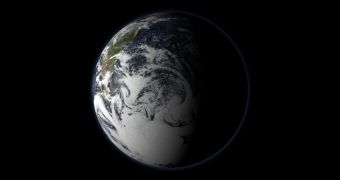According to investigators at the NASA Goddard Institute for Space Studies, led by director and paleoclimate expert James E Hansen, this century has tremendous potential for rapid, massive climate change. This can only be avoided by curbing global warming.
Hansen, who was the first to propose carbon emission curbs back in 1988, says that analyzing our planet's climate history can yield clues as to how the world will react to the massive amounts of greenhouse gases we are currently releasing in the atmosphere.
The work can also be useful because it allows experts to determine the extent to which Earth can be allowed to warm up, before the effects of increased temperatures become self-sustaining and devastating. Experts now generally agree that 2 degrees Celsius represent such a limit.
This is also the fundamental question in climate studies - what is the dangerous level of global warming? At the Durban, South Africa-based UN climate talks currently underway, representatives are operating under the (false) assumption that limiting warming to under 2 degrees Celsius will solve the problem.
On Tuesday, December 6 – while speaking at the fall meeting of the American Geophysical Union, held in San Francisco – Hansen revealed that Earth cannot be allowed to warm by 2 degrees. Though this degree of warming seems minimal, it would lead to catastrophic effects.
For starters, the majority of ice sheets covering Antarctica and Greenland – the largest such ice masses in the world – would disintegrate and melt, contributing to sea level rise. Since 1880, when weather records began being kept, Earth's temperature has already increased by 0.8 degrees Celsius.
Statistics show that average temperatures are currently increasing at a rate of 0.1 degrees Celsius every decade. Scientists say that increased greenhouse gas emissions – carbon dioxide, sulfur dioxide and methane, primarily – are responsible for the vast majority of this increase.
If the current level of pollution continues – at a rate of 10 billion tons of carbon emitted annually – atmospheric CO2 concentrations will reach twice preindustrial levels by 2050. Doubling carbon concentrations would then directly lead to a temperature spike of several degrees.
“The paleoclimate record reveals a more sensitive climate than thought, even as of a few years ago. Limiting human-caused warming to 2 degrees is not sufficient. It would be a prescription for disaster,” Hansen explains.
“Two degrees Celsius of warming would make Earth much warmer than during the Eemian, and would move Earth closer to Pliocene-like conditions, when sea level was in the range of 25 meters higher than today,” NASA quotes Hansen as saying in a press release.
“Humans have overwhelmed the natural, slow changes that occur on geologic timescales,” the expert concludes.

 14 DAY TRIAL //
14 DAY TRIAL //